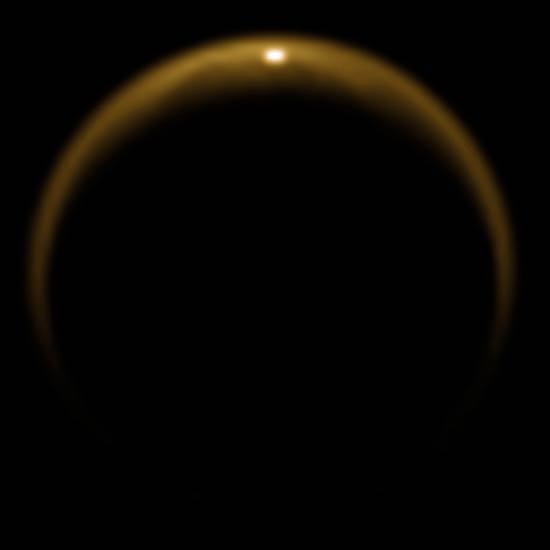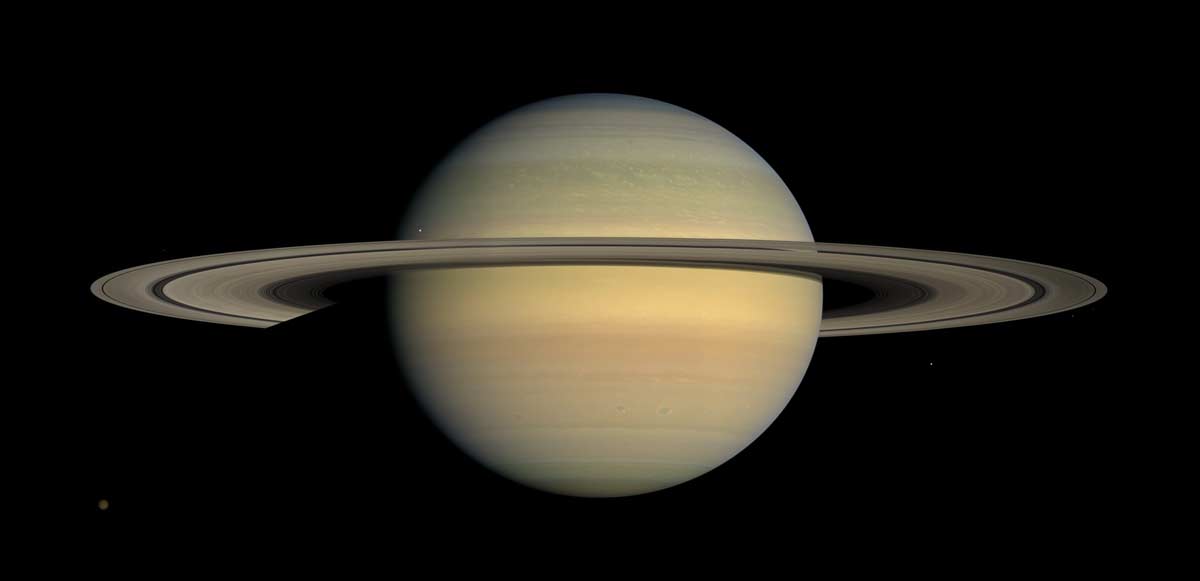How Saturn's Moon Titan Gets Its Smog

Scientists have shed new light on how Saturn's largest moon Titan gets its soupy smog. Thought to be similar to what Earth's atmosphere may have been like billions of years ago, the reddish-brown haze surrounding Titan could provide an example of how aerosol layers behave on our planet.
Using observations from NASA's Cassini spacecraft, which regularly flies by Titan, scientists found out that solar radiation hitting molecules of nitrogen and methane in the moon's ionosphere (the upper part of the atmosphere) creates a mix of negative and positive ions. These ions then crash into the organic molecules and help them grow into bigger and more complex aerosols, the researchers found.
"Lower down in the atmosphere, these aerosols bump into each other and coagulate, and at the same time interact with other, neutral particles," a statement from NASA read. "Eventually, they form the heart of the physical processes that rain hydrocarbons on Titan's surface and form lakes, channels and dunes."
Titan is dotted with liquid hydrocarbon lakes and it's the only other body in the solar system besides Earth that is known to have stable liquid on its surface.
The new research — led by Panayotis Lavvas, a France-based scientist participating in the Cassini mission — was detailed this week in the journal Proceedings of the National Academy of Sciences.
Follow SPACE.com on Twitter @Spacedotcom. We're also on Facebook and Google+.
Breaking space news, the latest updates on rocket launches, skywatching events and more!

Space.com is the premier source of space exploration, innovation and astronomy news, chronicling (and celebrating) humanity's ongoing expansion across the final frontier. Originally founded in 1999, Space.com is, and always has been, the passion of writers and editors who are space fans and also trained journalists. Our current news team consists of Editor-in-Chief Tariq Malik; Editor Hanneke Weitering, Senior Space Writer Mike Wall; Senior Writer Meghan Bartels; Senior Writer Chelsea Gohd, Senior Writer Tereza Pultarova and Staff Writer Alexander Cox, focusing on e-commerce. Senior Producer Steve Spaleta oversees our space videos, with Diana Whitcroft as our Social Media Editor.

